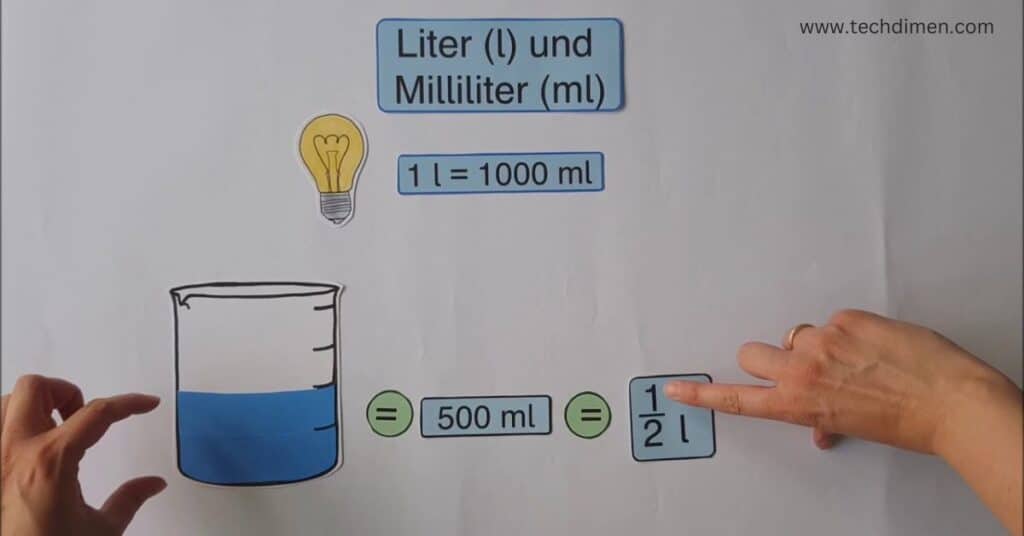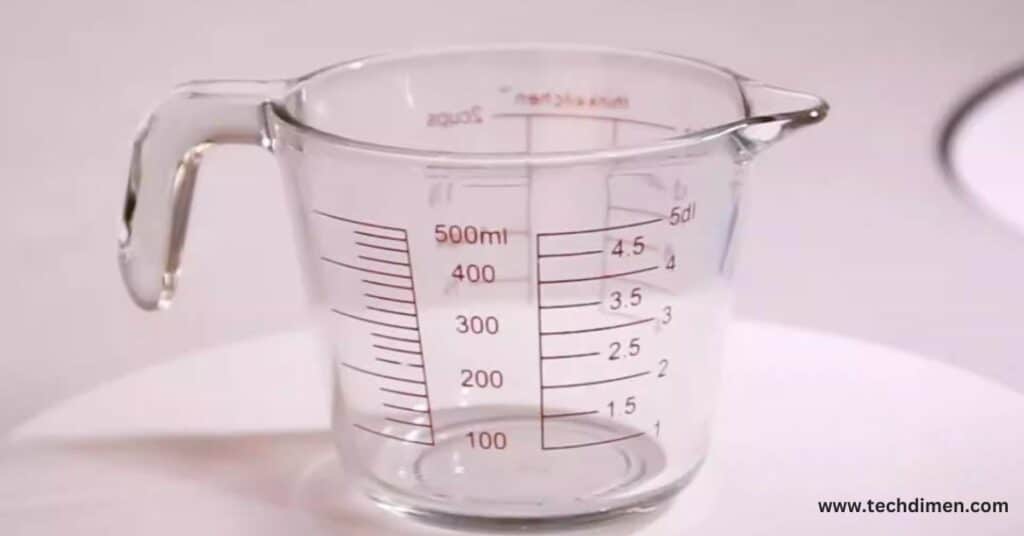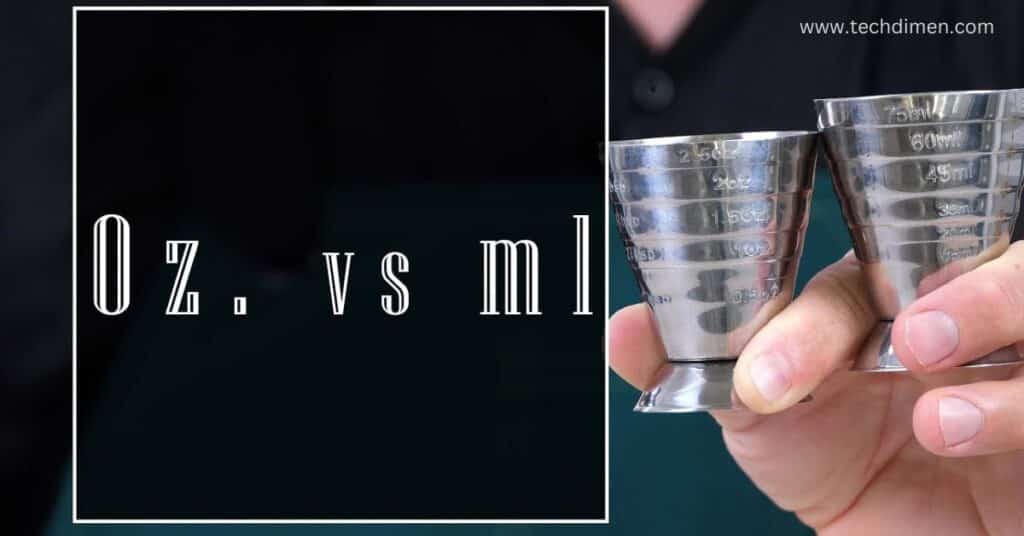Converting milliliters (ml) to ounces (oz) is a useful skill in everyday life, whether you’re cooking, tracking hydration, or dealing with products that require precise measurements. If you’ve ever asked, “How many ounces are in 600 ml?” or struggled to convert liquid measurements, this guide will help you. In this article, we’ll go over the conversion process, highlight the differences between US and UK fluid ounces, and explain the practical uses of converting 600 ml to oz.
How Many Ounces Are in 600 ml?

Let’s begin by answering the main question: how many ounces are in 600 ml? To convert 600 ml to fluid ounces in the US, we use the conversion factor of 1 milliliter (ml) = 0.033814 fluid ounces (oz). This means that to convert 600 ml to fluid ounces, we multiply 600 ml by 0.033814. The result is 20.29 ounces. Therefore, 600 ml is approximately 20.29 US fluid ounces.
It’s important to note that fluid ounces measure volume, not weight. For instance, 600 ml of water weighs about 600 grams, but the weight of other liquids like oil or syrup will vary, as they have different densities.
How many ounces are in 600 milliliters (ml), it’s essential to consider the specific system of measurement you’re using. The most common systems are the US fluid ounce and the UK fluid ounce, which differ slightly in size. Here’s a more detailed look into the conversion process for both systems:
What is a Milliliter (ml)?

A milliliter (ml) is a metric unit of volume commonly used to measure liquids. It is a smaller unit, with 1 milliliter (ml) being equal to 1/1000th of a liter. In the context of fluid measurements, milliliters are often used in both everyday tasks (like cooking) and more specialized industries (such as pharmaceuticals or beverage production).
What is an Ounce?
An ounce (oz) is a unit of measurement for volume that can be used in different systems:
- The US fluid ounce is commonly used in the United States and is slightly larger than the UK fluid ounce.
- The UK fluid ounce is used in the United Kingdom and some other countries that follow the imperial system.
Converting 600 ml to US Fluid Ounces
In the United States, 1 US fluid ounce is defined as 29.5735 milliliters (ml). This means that the US fluid ounce is slightly larger than the UK fluid ounce.
To convert 600 ml to US fluid ounces, we use the following formula:
Conversion Formula for US Fluid Ounces:
US fluid ounces=Milliliters×0.033814\text{US fluid ounces} = \text{Milliliters} \times 0.033814
So for 600 milliliters: 600 ml×0.033814=20.29 US fluid ounces600 \, \text{ml} \times 0.033814 = 20.29 \, \text{US fluid ounces}
Therefore, 600 milliliters is approximately 20.29 US fluid ounces.
This conversion is important when you’re working with liquid measurements in recipes, nutrition guidelines, and packaging in the United States, where the US fluid ounce is the standard.
Converting 600 ml to UK Fluid Ounces
In the United Kingdom (and countries using the imperial system), the UK fluid ounce is defined as 28.4131 milliliters (ml), which is slightly smaller than the US fluid ounce. This means that when you convert milliliters to UK fluid ounces, you’ll get a slightly larger number compared to the US measurement for the same amount of liquid.
Conversion Formula for UK Fluid Ounces:
UK fluid ounces=Milliliters×0.0351951\text{UK fluid ounces} = \text{Milliliters} \times 0.0351951
So for 600 milliliters: 600 ml×0.0351951=21.12 UK fluid ounces600 \, \text{ml} \times 0.0351951 = 21.12 \, \text{UK fluid ounces}
Thus, 600 milliliters is approximately 21.12 UK fluid ounces.
Difference Between US and UK Fluid Ounces
The key difference between US and UK fluid ounces lies in the size of the ounce itself:
- 1 US fluid ounce = 29.5735 milliliters
- 1 UK fluid ounce = 28.4131 milliliters
As a result, the US fluid ounce is slightly larger than the UK fluid ounce. This is why 600 ml converts to 20.29 US fluid ounces but to 21.12 UK fluid ounces. These differences can be critical when you’re following a recipe or measuring out specific quantities for health or product use.
Why Does the Difference Matter?

In everyday life, the difference between US and UK fluid ounces may seem minor, but it becomes more important in specific contexts like:
- Cooking and Baking: If you’re using a recipe from the US or the UK, the volume measurements of liquids (especially for ingredients like milk, water, or oils) could vary slightly due to the ounce difference. Substituting the wrong fluid ounce measurement might alter the outcome of your dish.
- Health and Hydration: When tracking liquid intake, it’s essential to know whether you’re using US or UK fluid ounces to ensure you’re meeting the proper hydration goals. Different countries might have different guidelines for daily fluid intake, so it’s crucial to measure liquids using the correct standard.
- Pharmaceuticals and Medicine: In medical settings, especially when it comes to dosing liquids (like syrups, injections, or IV fluids), the conversion between milliliters and ounces matters. Using the wrong conversion could lead to errors in dosing, which can be dangerous. Always double-check the measurement system you’re working with.
- Product Packaging: Many products like beverages, medicines, or cosmetics are sold with volume measurements listed on their packaging. If you’re buying a liquid product in one country and using a recipe from another, understanding the conversion can help you avoid confusion or mistakes.
Converting Between Milliliters and Ounces (General Formula)
The general formula for converting milliliters to fluid ounces (either US or UK) is relatively simple. For US fluid ounces, you multiply by 0.033814, and for UK fluid ounces, you multiply by 0.0351951. To make it easier, here’s a quick reference:
- 600 ml to US fluid ounces: 600 ml×0.033814=20.29 US fluid ounces600 \, \text{ml} \times 0.033814 = 20.29 \, \text{US fluid ounces}
- 600 ml to UK fluid ounces: 600 ml×0.0351951=21.12 UK fluid ounces600 \, \text{ml} \times 0.0351951 = 21.12 \, \text{UK fluid ounces}
This simple approach ensures that whether you’re following a recipe, buying a drink, or tracking your fluid intake, you’ll get the correct volume measurement based on the system you’re using.
600 ml to oz Conversion (US vs UK Measurements)
The difference between US and UK fluid ounces is crucial, especially when dealing with international recipes or purchasing products from different countries. The fluid ounce used in the US and the UK is not exactly the same. The US fluid ounce is defined as 1/128th of a US gallon, while the UK fluid ounce is 1/160th of an imperial gallon. This difference in volume means that the UK fluid ounce is slightly larger than the US fluid ounce.
When converting 600 ml to ounces in the US, the result is 20.29 fluid ounces, but for the UK, the conversion would be slightly higher. To convert 600 ml to UK fluid ounces, we multiply by the conversion factor of 0.0351951. This results in 21.12 fluid ounces in the UK. Thus, 600 ml is approximately 20.29 US fluid ounces and 21.12 UK fluid ounces.
When converting 600 milliliters (ml) to fluid ounces (oz), it’s important to understand that the conversion can differ depending on whether you’re using US fluid ounces or UK fluid ounces. While the milliliter is a metric unit and stays the same worldwide, the fluid ounce is part of two distinct measurement systems: the US system and the imperial system (which is used in the UK and some other countries). These differences arise because the fluid ounce in the US and the UK is not the same size.
Let’s dive into the details of how 600 ml converts into fluid ounces in both the US and UK measurement systems.
US Fluid Ounces vs UK Fluid Ounces

To start, it’s useful to know how the fluid ounce is defined in both systems:
- US Fluid Ounce (US fl oz):
- 1 US fluid ounce is defined as exactly 29.5735 milliliters (ml).
- UK Fluid Ounce (UK fl oz):
- 1 UK fluid ounce is defined as exactly 28.4131 milliliters (ml).
The US fluid ounce is slightly larger than the UK fluid ounce, which leads to different conversions when you’re working with milliliters and fluid ounces.
How Many US Fluid Ounces Are in 600 ml?
To convert 600 milliliters (ml) into US fluid ounces (fl oz), we use the following formula:
Conversion Formula:
US fluid ounces=Milliliters×0.033814\text{US fluid ounces} = \text{Milliliters} \times 0.033814
Using this formula for 600 ml: 600 ml×0.033814=20.29 US fluid ounces600 \, \text{ml} \times 0.033814 = 20.29 \, \text{US fluid ounces}
So, 600 milliliters is approximately 20.29 US fluid ounces.
Why the US Fluid Ounce Is Larger
The reason 600 ml gives 20.29 US fluid ounces (compared to the UK’s conversion) is that the US fluid ounce is slightly larger than the UK fluid ounce. This difference in volume might seem small, but it can have practical implications in areas like cooking, healthcare, and packaging.
How Many UK Fluid Ounces Are in 600 ml?
Next, let’s convert 600 milliliters (ml) into UK fluid ounces (fl oz). For this, we use the formula for UK fluid ounces, which is:
Conversion Formula:
UK fluid ounces=Milliliters×0.0351951\text{UK fluid ounces} = \text{Milliliters} \times 0.0351951
Using this formula for 600 ml: 600 ml×0.0351951=21.12 UK fluid ounces600 \, \text{ml} \times 0.0351951 = 21.12 \, \text{UK fluid ounces}
Therefore, 600 milliliters is approximately 21.12 UK fluid ounces.
Why the UK Fluid Ounce Is Smaller
Since the UK fluid ounce is smaller than the US fluid ounce, the conversion results in a higher number of fluid ounces for the same volume of liquid. This smaller size of the UK fluid ounce is consistent with the imperial measurement system, which often uses different quantities compared to the US customary system.
Why Does This Matter?
The difference in fluid ounce size between the US and UK systems may seem small, but it can have significant consequences in various practical applications:
- Cooking and Recipes: If you’re using a recipe from a different country, it’s crucial to know which type of fluid ounce the recipe is referring to. For instance, if a recipe calls for 20 fluid ounces in the US system, it may be slightly different when using the UK fluid ounce system. This small variation could impact the final result, especially in baking or recipes that require precise measurements.
- Product Packaging: Beverage and food manufacturers may use either US or UK fluid ounces to label their products. Understanding the difference can help you avoid confusion, especially when shopping online for products that might be labeled differently depending on the country of origin.
- Health and Hydration: Many health apps and hydration trackers use fluid ounces to help you monitor your daily liquid intake. If you’re in the US, you’ll be tracking with US fluid ounces, but if you’re following international health guidelines or traveling, you might encounter UK fluid ounces, which are slightly different. It’s important to understand these differences to ensure accurate tracking of hydration and other health-related measurements.
- Pharmaceuticals and Medical Dosage: In medical settings, accurate measurement of liquids is critical, particularly for medications and IV fluids. The difference in fluid ounce size might impact the calculation of medication dosage if not properly converted. Whether you’re receiving a liquid medication or giving an injection, understanding the fluid ounce measurement system in use is important for safety.
Practical Examples of 600 ml in US vs UK Fluid Ounces
Let’s take a closer look at some practical examples of 600 ml in both US fluid ounces and UK fluid ounces.
- Water Bottle Size: A typical 600 ml water bottle is commonly found in many markets worldwide. When you convert that 600 ml into fluid ounces:
- US version: You’ll have 20.29 fluid ounces.
- UK version: You’ll have 21.12 fluid ounces.
- Recipe Ingredient: In a recipe that calls for 600 ml of water or milk, converting this amount into fluid ounces can be essential, especially if the recipe is from another country.
- US recipe: The ingredient is 20.29 US fluid ounces.
- UK recipe: The ingredient is 21.12 UK fluid ounces.
- IV Fluid Administration: When doctors or nurses administer IV fluids, it’s important to understand which fluid ounce system is being used. Whether in the US or UK, converting 600 ml to fluid ounces ensures the right dosage is given. As we’ve seen, the US fluid ounce is slightly larger, meaning the total volume of fluids administered may vary by a small amount between the two systems.
Conversion Chart for Quick Reference
Here’s a handy chart to quickly reference the conversion of 600 milliliters into US and UK fluid ounces:
| Milliliters (ml) | US Fluid Ounces (fl oz) | UK Fluid Ounces (fl oz) |
|---|---|---|
| 600 ml | 20.29 US fluid ounces | 21.12 UK fluid ounces |
This chart makes it easier to quickly reference the conversions between 600 ml and the two different types of fluid ounces.
The conversion of 600 ml to fluid ounces can differ depending on whether you’re using US or UK fluid ounces. While the milliliter measurement stays the same, the difference in the size of the fluid ounce results in:
- 600 ml is approximately 20.29 US fluid ounces.
- 600 ml is approximately 21.12 UK fluid ounces.
This distinction is important when cooking, tracking hydration, measuring medication, or working with international product packaging. By knowing how to convert between the two systems, you can ensure accuracy in your measurements and avoid potential issues that might arise from using the wrong fluid ounce standard.
600 ml to oz Conversion Chart

Having a quick reference for converting milliliters to fluid ounces is incredibly useful in many situations. Below is a conversion chart for common measurements:
| Milliliters (ml) | US Fluid Ounces (oz) | UK Fluid Ounces (oz) |
|---|---|---|
| 100 ml | 3.38 oz | 3.52 oz |
| 200 ml | 6.76 oz | 7.04 oz |
| 300 ml | 10.14 oz | 10.56 oz |
| 400 ml | 13.52 oz | 14.08 oz |
| 600 ml | 20.29 oz | 21.12 oz |
| 1000 ml (1 liter) | 33.81 oz | 35.20 oz |
This chart is handy for quick reference and can be useful when adjusting recipes, tracking hydration, or calculating fluid volumes.
600 ml to oz Conversion Chart
To make it easier for you to convert 600 milliliters (ml) into fluid ounces (oz), here’s a detailed conversion chart for both US and UK fluid ounces. Whether you’re in the kitchen, tracking your hydration, or working with international product packaging, having the right conversion at your fingertips is crucial.
Let’s break down the conversions of 600 ml into both US fluid ounces and UK fluid ounces with an in-depth chart:
| Milliliters (ml) | US Fluid Ounces (fl oz) | UK Fluid Ounces (fl oz) |
|---|---|---|
| 600 ml | 20.29 US fl oz | 21.12 UK fl oz |
Detailed Conversion Explanation
US Fluid Ounces:
- 600 ml to US fluid ounces:
The formula to convert milliliters to US fluid ounces is:
US fluid ounces=milliliters×0.033814\text{US fluid ounces} = \text{milliliters} \times 0.033814 So, for 600 ml: 600×0.033814=20.29 US fluid ounces600 \times 0.033814 = 20.29 \text{ US fluid ounces}- In this case, the US fluid ounce is defined as approximately 29.5735 milliliters. This conversion factor is standard in the US and commonly used for liquids like beverages, water, and cooking ingredients.
UK Fluid Ounces:

- 600 ml to UK fluid ounces:
The formula to convert milliliters to UK fluid ounces is:
UK fluid ounces=milliliters×0.0351951\text{UK fluid ounces} = \text{milliliters} \times 0.0351951 So, for 600 ml: 600×0.0351951=21.12 UK fluid ounces600 \times 0.0351951 = 21.12 \text{ UK fluid ounces}- The UK fluid ounce is slightly smaller than the US fluid ounce and is defined as approximately 28.4131 milliliters. This difference is due to the varying definitions of fluid ounces in the imperial system (used in the UK) compared to the US customary system.
Why Does the Difference Matter?
The differences between US and UK fluid ounces may seem small but can have significant consequences in various contexts:
- Cooking and Baking:
- When you follow a recipe, particularly one that uses liquid ingredients, even a small difference in measurement can impact the final product. For example, in recipes that call for water, milk, or oils, using UK fluid ounces instead of US fluid ounces can result in slight discrepancies in texture or taste.
- If you’re following a recipe from a source based in the UK but are using US measurements, or vice versa, you may end up with a dish that’s slightly off.
- Hydration and Medical Dosage:
- Hydration tracking is a common area where accurate measurements matter. For instance, if you’re following a daily hydration goal of a certain number of fluid ounces, the difference in the volume of liquid might affect your intake, especially if you’re following guidelines that use different fluid ounce measurements.
- In medical or pharmaceutical settings, precise measurements are essential. Incorrect dosage due to the wrong fluid ounce measurement could impact treatments or the effectiveness of liquid medications.
- Product Packaging:
- International product packaging, particularly for liquids like beverages or medicines, may list different fluid ounce measurements based on the region. A 600 ml bottle in the US might be labeled as 20.29 fluid ounces, while the same volume in the UK might be labeled as 21.12 fluid ounces. This difference could impact consumers, particularly when comparing products across regions.
Practical Example
Imagine you’re making a drink that calls for 600 ml of water and the recipe specifically states US fluid ounces. Using the wrong measurement could lead to inconsistencies. Here’s how that could look:
- If you used 21.12 UK fluid ounces instead of 20.29 US fluid ounces, you might end up with slightly more liquid, making the drink a bit more diluted than intended.
- On the other hand, using fewer fluid ounces than needed could affect the consistency or taste, especially in recipes that require precise liquid-to-solid ratios.
The difference between US fluid ounces and UK fluid ounces is essential for accuracy, whether you’re cooking, baking, tracking hydration, or working with international product specifications. The 600 ml to fluid ounces conversion chart helps you quickly navigate this difference, ensuring you’re using the correct measurements for your needs.
Knowing the right conversion will save you time, help you get the perfect results in the kitchen, and ensure accuracy in your health tracking or medical tasks.
Why Knowing 600 ml to oz Is Important?
Understanding the conversion of 600 ml to oz is useful in several real-life situations. Whether you’re cooking, hydrating, or dealing with health measurements, accurate fluid measurements are essential.
In the kitchen, many recipes from countries that use the metric system (such as Europe and Canada) will list ingredients in milliliters. However, if your measuring cups are in ounces, knowing that 600 ml is equivalent to 20.29 US fluid ounces allows you to follow the recipe correctly. Without this knowledge, you could end up with an incorrect amount of ingredients, potentially ruining the dish.
For hydration tracking, especially if you are using apps that monitor fluid intake, knowing that 600 ml is about 20.29 oz can help you ensure you’re meeting your hydration goals. Whether you’re drinking water, juice, or other beverages, tracking the amount you consume in fluid ounces can be more familiar than using milliliters.
Moreover, in medical settings, where liquids like IV fluids or medications are often measured in milliliters, being able to convert to fluid ounces can be crucial for accurate dosage. Healthcare professionals may need to convert 600 ml to oz when preparing treatments or managing fluid intake for patients
Why Knowing 600 ml to oz Is Important?
The conversion from 600 milliliters (ml) to fluid ounces (oz) is more than just a quick mathematical calculation—it’s a vital piece of knowledge that impacts a variety of daily activities, from cooking and beverage preparation to health tracking and product usage. The ability to accurately convert measurements ensures precision and consistency across various applications. Let’s dive deeper into why knowing 600 ml to oz is important in different contexts.
1. Cooking and Baking: Precision Matters
In the kitchen, the accuracy of measurements is crucial, especially when it comes to recipes that require precise liquid ingredients. Whether you’re following a recipe for a cake, soup, or salad dressing, the difference between 600 ml and its equivalent in fluid ounces can affect the taste, texture, and consistency of your dish. For instance:
- 600 ml of milk is about 20.29 US fluid ounces. If you mistakenly use a UK fluid ounce measurement, which is slightly larger, you could end up with an overly runny batter or an overly thin soup.
- Recipes often use fluid ounce measurements for ingredients like water, milk, or oils. If you need to convert milliliters to ounces to ensure you’re using the right amount, knowing this conversion can save you time and effort and help you achieve the intended results.
2. Health and Hydration: Tracking Fluid Intake
Keeping track of your daily hydration is a key part of maintaining a healthy lifestyle. Hydration recommendations often use fluid ounces as the unit of measurement, and accurate conversions are essential for meeting hydration goals.
- 600 ml of water equals approximately 20.29 US fluid ounces or 21.12 UK fluid ounces, which is roughly 2.5 glasses of water in the US measurement. For individuals who need to monitor their hydration throughout the day, this information helps ensure they stay on track with their daily water intake.
- Misunderstanding fluid measurements, such as using the wrong system of measurement, could lead to either under-hydration or over-hydration, both of which can be harmful to your health.
3. Medical and Pharmaceutical Applications
In medical and healthcare settings, accurate fluid measurement is absolutely essential. From administering medications to monitoring IV fluid intake, knowing the correct conversion from milliliters to ounces ensures precision and safety.
- Many medical dosages are measured in milliliters, but they might be prescribed in fluid ounces. For example, a dosage of liquid medicine may be specified as 600 ml in the prescription, but the pharmacist may ask for the amount in fluid ounces. Knowing how to convert 600 ml to oz ensures that patients receive the proper amount of medication, avoiding both underdosage and overdose.
- The difference between US and UK fluid ounces can be particularly important in international medical practice or for people who travel across borders. Proper conversions help avoid errors in both medication dosages and treatment fluid measurements, which are critical in healthcare settings.
4. International Product Usage and Packaging
Different countries use different measurement systems, which can make understanding product labels confusing. For instance, liquid containers like beverages, bottles, and syringes may be labeled with milliliters (ml) or fluid ounces (oz), and knowing how to convert these units correctly can help prevent mistakes when purchasing or using products.
- International packaging for products like beverages (water, juice, soft drinks) and medicines can vary between the US and UK systems. A 600 ml bottle of soda in the US may be labeled as 20.29 US fluid ounces, but the same volume in the UK may be labeled as 21.12 UK fluid ounces.
- If you’re traveling or purchasing international products online, understanding the 600 ml to oz conversion can help you avoid confusion about the actual volume of liquid in the container. Whether you’re using it for drinking, cooking, or any other purpose, accurate knowledge of fluid ounces helps ensure you’re getting what you expect.
5. Everyday Convenience in Measurement
Whether you’re filling up a 600 ml water bottle, preparing a 600 ml serving of a beverage, or determining the fluid ounces in 600 ml, having this knowledge at hand makes everyday tasks more manageable. This information simplifies:
- Recipe conversions: Sometimes, recipes may call for a specific number of fluid ounces, but you may have a liquid measure in milliliters. Knowing how to convert 600 ml to fluid ounces makes adapting recipes easier and ensures you’re using the correct amount of ingredients.
- Measuring ingredients for beverages: If you’re preparing a 600 ml drink mix, such as juice or a smoothie, converting to ounces gives you the flexibility to use different measuring tools, especially if you don’t have a milliliter-based measurement tool at hand.
6. Avoiding Mistakes and Enhancing Accuracy
In both personal and professional settings, being able to convert milliliters to ounces without hesitation minimizes the risk of errors. Whether it’s a recipe, a hydration goal, or an accurate pharmaceutical dosage, being able to quickly and confidently convert between measurement systems is a skill that saves time and enhances the quality of your work. Inaccurate measurements can lead to subpar results in cooking, incorrect medication dosages in healthcare, or even safety hazards when dealing with industrial products.
Knowing how to convert 600 ml to oz is a skill that plays an essential role in a variety of real-world scenarios, from cooking and health to pharmaceuticals and international product usage. Whether you’re trying to follow a recipe to perfection, track your water intake, or administer the right dose of medication, understanding these conversions ensures accuracy and precision. By mastering the ml to oz formula, you can avoid confusion and guarantee that your measurements are on point, no matter what situation you’re in..
Why You Should Know 600 ml to oz
There are several practical reasons why understanding the conversion from 600 ml to oz can be beneficial. For one, it allows you to make adjustments when working with international recipes or dealing with products from different countries. If you often find yourself using US-based recipes but purchase ingredients that are labeled in milliliters, this knowledge allows you to follow the recipe more accurately.
If you travel internationally or purchase products online, knowing how much a 600 ml bottle is in fluid ounces can help you make the right purchase. Some products, like beverages and personal care items, may be listed in milliliters in one country, but in ounces in another. Understanding the conversion gives you clarity and helps prevent confusion when comparing packaging sizes.
In fields such as pharmaceuticals and food manufacturing, accurate conversions are important to maintain product consistency. Whether it’s measuring medication doses or formulating beverages, understanding liquid measurement conversions ensures the right amounts are used.
Popular Items That Are 600 ml
There are a variety of commonly used products that come in 600 ml sizes. These include everyday items like beverages and personal care products. Knowing how many ounces are in 600 ml can help you understand these measurements and make better decisions.
Water bottles are a great example. A typical 600 ml water bottle is equivalent to approximately 20.29 oz in US fluid ounces. This size is convenient for staying hydrated throughout the day without needing to refill constantly. Additionally, milk cartons often come in 600 ml sizes, providing a convenient, single-serving size for daily use.
Juice bottles and soft drink containers are also available in 600 ml sizes. For instance, a 600 ml juice bottle typically holds around 20.29 oz of liquid. These products are great for families or individuals who need a moderate amount of beverage at a time.
In addition, some cosmetic products like lotions, shampoos, or conditioners are packaged in 600 ml bottles, offering a larger, more economical size compared to smaller options.
600 ml to oz Use in Latest Technology
The conversion of 600 ml to fluid ounces also extends beyond the kitchen and medical fields. In the world of technology, 600 ml fluid containers are used for various high-tech purposes.
For example, printer ink cartridges are often measured in milliliters. Some commercial ink cartridges come in 600 ml sizes, which is equivalent to about 20.29 oz. Understanding the fluid ounce equivalent can be useful when determining the best value for large-scale printing jobs.
In addition, tech devices such as cooling systems, laser printers, and even some camera equipment use fluid containers measured in milliliters. The fluid ounces equivalent can help users maintain or troubleshoot devices that require liquid cooling or fluid refills.
600 ml Use in Medical Applications
The use of 600 ml in medical applications is crucial in areas such as hydration, medication dosages, and fluid therapy. In hospitals or healthcare settings, 600 ml of IV fluid can be administered to patients, but knowing the fluid ounce equivalent can help healthcare professionals monitor and adjust the treatment.
Medications, especially liquid ones, are often measured in milliliters, but for patients who require specific doses in fluid ounces, understanding how many ounces are in 600 ml becomes important. This helps ensure the correct amount is administered.
For those tracking hydration for medical reasons, such as patients recovering from illness or athletes undergoing physical therapy, knowing that 600 ml is about 20.29 fluid ounces allows them to meet hydration targets more effectively.
Frequently Asked Questions (FAQs) About 600 ml to oz Conversion
How Many Ounces Are in 600 ml?
600 milliliters (ml) is approximately equal to 20.29 US fluid ounces. To convert milliliters to ounces, divide the number of milliliters by 29.5735. For UK fluid ounces, 600 ml equals approximately 21.12 UK fluid ounces, due to the difference in the measurement system between the US and the UK.
What Is the Formula to Convert 600 ml to oz?
To convert milliliters (ml) to fluid ounces (oz), use this simple formula:
oz = ml ÷ 29.5735 (for US fluid ounces)
For example:
- oz = 600 ÷ 29.5735 ≈ 20.29 US fluid ounces
For UK fluid ounces, use this conversion factor:
oz = ml ÷ 28.4131
For example:
- oz = 600 ÷ 28.4131 ≈ 21.12 UK fluid ounces
Why Does 600 ml Equal 20.29 Ounces in the US and 21.12 Ounces in the UK?
The difference in the conversion arises because the US and the UK use different definitions for a fluid ounce. The US fluid ounce is defined as 29.5735 ml, while the UK fluid ounce is defined as 28.4131 ml. This slight difference in volume explains why 600 ml converts to different ounce values in the two systems.
How Can I Convert Other Volumes from ml to oz?
To convert any other volume from milliliters (ml) to fluid ounces (oz), use the same formula:
- oz = ml ÷ 29.5735 (for US fluid ounces)
- oz = ml ÷ 28.4131 (for UK fluid ounces)
For example:
- 500 ml = 16.91 US fluid ounces
- 1000 ml = 33.81 US fluid ounces
How Many Fluid Ounces Are in 600 ml of Water?
Since the density of water is close to 1 g/ml, 600 ml of water is equivalent to approximately 20.29 US fluid ounces. This is a straightforward conversion, as the volume and mass of water correlate closely in milliliters and fluid ounces.
What Is the Difference Between US and UK Fluid Ounces?
The main difference between US and UK fluid ounces lies in their definitions:
- US fluid ounce = 29.5735 ml
- UK fluid ounce = 28.4131 ml
This discrepancy leads to slightly different measurements for the same liquid volume in the two systems.
How Can I Convert 600 ml to oz Without a Calculator?
To manually convert 600 ml to fluid ounces, divide 600 by 29.5735 for US fluid ounces or 28.4131 for UK fluid ounces. Though a calculator is ideal for accuracy, you can estimate that 600 ml is approximately 20 ounces in the US and 21 ounces in the UK.
Are There Any Tools to Help With ml to oz Conversion?
Yes, there are several online calculators, apps, and conversion tables that can help you quickly convert milliliters to fluid ounces. These tools make the process effortless, saving you from having to perform manual calculations.
Why Do Different Countries Use Different Measurements for Ounces?
Different countries adopted varying standards for fluid ounces based on historical measurement systems. The US uses a larger fluid ounce (29.5735 ml), while the UK uses a slightly smaller fluid ounce (28.4131 ml). This difference is a result of the US customary measurement system and the imperial measurement system used in the UK.
How Can I Convert 600 ml to Other Units of Measurement?
If you need to convert 600 ml to other units of liquid measurement:
- To Liters: 600 ml = 0.6 liters
- To Cubic Centimeters (cc): 600 ml = 600 cc (since 1 ml = 1 cc)
- To Teaspoons: 600 ml = 120 teaspoons
- To Tablespoons: 600 ml = 40 tablespoons
These conversions can be helpful when you’re dealing with different liquid measurements in various contexts, such as cooking or when using specialized equipment.
Is the Conversion of 600 ml to oz the Same for All Liquids?
The conversion from milliliters (ml) to ounces (oz) applies universally to all liquids. However, when dealing with more viscous liquids like oils or syrups, the volume measurement in milliliters and fluid ounces remains the same, but the weight might differ because of varying densities. So, while the volume stays the same, the weight of the liquid may not.
Can I Use a Simple Conversion Chart for 600 ml to oz?
Yes, conversion charts are excellent tools for quickly converting 600 ml to fluid ounces. These charts usually list standard conversions for both US and UK fluid ounces, offering an easy reference for when you need to convert liquid measurements without performing any calculations.
Final Thoughts on Converting 600 ml to oz
Understanding the conversion of 600 ml to oz is more than just a simple mathematical exercise. It has real-world applications in cooking, health, travel, and technology. Whether you’re following recipes, tracking your hydration, or dealing with medical dosages, knowing how many ounces are in 600 ml can save you time and effort.
As you can see, the conversion from 600 ml to fluid ounces is important for everyday tasks and professional applications. Knowing that 600 ml equals 20.29 US fluid ounces or 21.12 UK fluid ounces allows you to make more informed decisions, ensuring accuracy in various areas of life. By mastering this conversion, you’ll be better equipped to handle fluid measurement challenges in the kitchen, medical settings, and beyond.

Jhon AJS is a tech enthusiast and author at Tech Dimen, where he explores the latest trends in technology and TV dimensions. With a passion for simplifying complex topics, Jhon aims to make tech accessible and engaging for readers of all levels.







